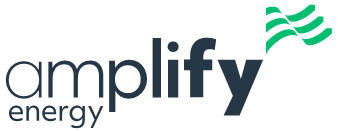Forward-Looking Statements
This press release includes “forward-looking statements” within the meaning of Section 27A of the Securities Act of 1933, as amended, and Section 21E of the Securities Exchange Act of 1934, as amended. All statements, other than statements of historical facts, included in this press release that address activities, events or developments that Amplify expects, believes or anticipates will or may occur in the future are forward-looking statements. Terminology such as “will,” “would,” “should,” “could,” “expect,” “anticipate,” “plan,” “project,” “intend,” “estimate,” “believe,” “target,” “continue,” “potential,” the negative of such terms or other comparable terminology are intended to identify forward-looking statements. Amplify believes that these statements are based on reasonable assumptions, but such assumptions may prove to be inaccurate. Such statements are also subject to a number of risks and uncertainties, most of which are difficult to predict and many of which are beyond the control of Amplify, which may cause Amplify’s actual results to differ materially from those implied or expressed by the forward-looking statements. Please read the Company’s filings with the Securities and Exchange Commission, including “Risk Factors” in its Annual Report on Form10-K, and if applicable, its Quarterly Reports on Form10-Q and Current Reports on Form8-K, and other public filings and press releases for a discussion of risks and uncertainties that could cause actual results to differ from those in such forward-looking statements. All forward-looking statements speak only as of the date of this press release. All forward-looking statements in this press release are qualified in their entirety by these cautionary statements. Amplify undertakes no obligation and does not intend to update or revise any forward-looking statements, whether as a result of new information, future results or otherwise.
Use ofNon-GAAP Financial Measures
This press release and accompanying schedules include thenon-GAAP financial measures of Adjusted EBITDA and Free Cash Flow. The accompanying schedules provide a reconciliation of thesenon-GAAP financial measures to their most directly comparable financial measure calculated and presented in accordance with GAAP. Amplify’snon-GAAP financial measures should not be considered as alternatives to GAAP measures such as net income, operating income, net cash flows provided by operating activities or any other measure of financial performance calculated and presented in accordance with GAAP. Amplify’snon-GAAP financial measures may not be comparable to similarly titled measures of other companies because they may not calculate such measures in the same manner as Amplify does.
Adjusted EBITDA. Amplify defines Adjusted EBITDA as net income or loss, plus interest expense; income tax expense; depreciation, depletion and amortization; impairment of goodwill and long-lived assets; accretion of asset retirement obligations; losses on commodity derivative instruments; cash settlements received on expired commodity derivative instruments; losses on sale of assets; unit-based compensation expenses; exploration costs; acquisition and divestiture related expenses; amortization of gain associated with terminated commodity derivatives, bad debt expense; and othernon-routine items, less interest income; gain on extinguishment of debt; income tax benefit; gains on commodity derivative instruments; cash settlements paid on expired commodity derivative instruments; gains on sale of assets and other, net; and othernon-routine items. Adjusted EBITDA is commonly used as a supplemental financial measure by management and external users of Amplify’s financial statements, such as investors, research analysts and rating agencies, to assess: (1) its operating performance as compared to other companies in Amplify’s industry without regard to financing methods, capital structures or historical cost basis; (2) the ability of its assets to generate cash sufficient to pay interest and support Amplify’s indebtedness; and (3) the viability of projects and the overall rates of return on
7
